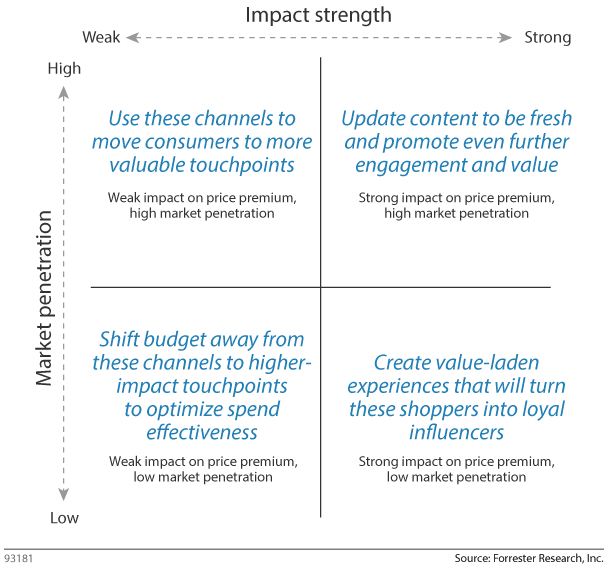Getting The Most Bang For Your Marketing Buck: Introducing Forrester’s Touchpoint-Impact Framework
As a marketer, have you struggled to identify the channels and information sources that will give you the most bang for your marketing buck? My colleague Cory Munchbach and I have just published a report — “Assess The Impact Of Touchpoints Along The Consumer Path-To-Purchase” — that tackles this issue through the lens of the customer life cycle.
Consumers use a multitude of touchpoints when discovering, exploring, buying, and engaging with brands, but some sources are more effective than others. In the explore phase, consumers use a variety of information sources and touchpoints to research the products and services they’ve discovered. But which ones are most effective in driving consumers to the buy phase and have a stronger influence on the price that consumers ultimately pay for their purchase? To help companies answer these questions, we developed the Touchpoint-Impact Framework, which identifies the channels or interaction points that have the biggest impact on consumers’ spend as a percentage above the average price for a given category — the so-called price premium.
The graphic below illustrates the Touchpoint-Impact Framework and how it places the channels that consumers use to explore brands, products, or services into four quadrants:
- Strong premium impact and low market penetration.
- Strong premium impact and high market penetration.
- Weak premium impact and low market penetration.
- Weak premium impact and high market penetration.

We found that the impact on the price premium and usage varies by product category. For example, a retailer website or email falls in the “weak premium impact and high market penetration” quadrant for consumer electronics but in the “strong premium impact and high market penetration” quadrant for cars.
Marketers can use this framework to help prioritize their channel/touchpoint investments and marketing efforts as well as to encourage shoppers to use those channels that are most highly correlated with greater price premiums. Cory Munchbach offers some guidance on what marketers should do with this information and what it means for their marketing program.
Clients can read the report here or register for the related Webinar here.